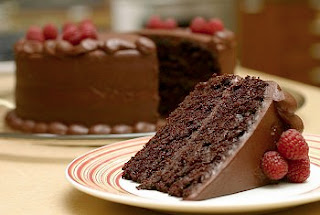This week's question is from B. in RI...
BDunhamJ July 20, 2012How do I remove eggs from a diet so that I am eating as few of them as possible? Also, can you recommend a good tasting gluten free bread?
Hi B.,
Reducing and/or replacing eggs in the diet is fairly easy.
Unless you can’t imagine life without an omelette or sunny-side eggs, you can
substitute them in just about everything…with great success.
How you change your diet depends on how you buy and cook
your food. Do you eat out a lot, does someone else do your cooking, or do you
like to cook? Those answers will provide the correct path.
If you are not the one shopping and cooking you will need
that person to understand what you want to achieve, and help he/she to provide
the appropriate foods (teaching what to buy and how to prepare it). If you are
responsible solely for your food preparation you will be astounded how easy the
change can be. Either way, you need to start with what to buy and how to use
it. Only you know what you enjoy eating, but when you change your diet a
little, you’ll find you are more open to new types of foods and seasonings and
flavors.
The primary uses for eggs in the diet are as breakfast
staples (fried, poached, scrambled, French toast, etc.), and for egg salad,
hard boiled eggs in salads, quiches, custards, casseroles, baked goods, mayonnaise,
and even pickled eggs. Let’s see how to substitute these standards…Recipes
in tab above: Egg-Free Recipes
As for your question about good-tasting, gluten-free bread,
I suggest trying the different brands in the freezer section at Whole Foods or
Stop & Shop (natural foods area). Keep the loaves frozen and remove the
slices as you use them. Gluten-free bread tends to dry out quickly and become
more crumbly. Thawing as needed gives you the best chance of tasty bread. I do
not suggest raw, sprouted breads for sandwiches—too dense.
Another way to have a great-tasting sandwich is to use lettuce leaves as a wrap
for your fillings. You can have just about any kind of sandwich in a lettuce
wrap…trying different types of wide-leaf lettuces will give you more options.
Why not try to
replace eggs with…
Breakfast Staples:
Scrambled tofu with onions and peppers
Pan-fried baked tofu with soy sausage
French toast stuffed with fresh fruit (or preserves) and soy cream cheese
Scrambled tofu with onions and peppers
Pan-fried baked tofu with soy sausage
French toast stuffed with fresh fruit (or preserves) and soy cream cheese
Salads:
Faux egg salad
Tips on how to add eggyness to green salads & potato/pasta salads
Quiches, Custards, Casseroles:
Spinach, Onion, Tomato Quiche
Coconut Custard or buy prepared custard and pudding mixes which can made with soy or nut milks
Broccoli & Rice Casserole
Faux egg salad
Tips on how to add eggyness to green salads & potato/pasta salads
Quiches, Custards, Casseroles:
Spinach, Onion, Tomato Quiche
Coconut Custard or buy prepared custard and pudding mixes which can made with soy or nut milks
Broccoli & Rice Casserole
Baked Goods:
The function of the egg in the recipe dictates the substitute.
Eggs are used as binders in brownies and cookies; muffins and cakes get their leavening (partially) from eggs.
The function of the egg in the recipe dictates the substitute.
Eggs are used as binders in brownies and cookies; muffins and cakes get their leavening (partially) from eggs.
A recipe calling for one egg will usually work fine without
the egg or a substitute (3 tablespoons of water or other fluid will compensate
for the lost liquid).
Binding Agent:
- · Grind 1 tablespoon flax seeds into a powder; blend with ¼ cup water (allow to gel 5 mins.) = Replaces 1 egg
- · One small, sweet or white potato, mashed = Replaces 1 egg (also adds moisture)
- · ½ cup mashed banana or applesauce= Replaces 1 egg (also adds moisture)
- · ¼ cup silken tofu (processed in a blender)= Replaces 1 egg (also adds moisture)
- · 1 cup yogurt (dairy or soy)=Replaces 1-2 eggs (also adds moisture)
Leavening and Binding Agent:
- · Ener-G Egg Replacer— use as directed (available in most health food stores and Whole Foods markets)
- · One teaspoon baking powder (additionally to recipe)
- · 1 tsp. baking powder, 1 T. water, 1 T. white vinegar (whisk together)= 1 egg
Mayonnaise:
Mayonnaise is pretty easy to make at home, but it’s easily available in health food stores and in many markets besides Whole Foods and Trader Joe’s. Nayonaise and Veganaise are both good choices—it’s a matter of taste.
Mayonnaise is pretty easy to make at home, but it’s easily available in health food stores and in many markets besides Whole Foods and Trader Joe’s. Nayonaise and Veganaise are both good choices—it’s a matter of taste.
Pickled Eggs:
I can’t help you on this one! Pickled tofu would be the closest, but wow! Yuck! It would be so soggy. I say go for pickled veggies and call it a day.
I can’t help you on this one! Pickled tofu would be the closest, but wow! Yuck! It would be so soggy. I say go for pickled veggies and call it a day.








